Once you have gone through all the other stages of the growth cycle of your marijuana plants, the phase that most growers await for the most is the harvest season. Harvesting cannabis is a process that gives a lot of joy to growers as it allows them the pleasure of finally being able to enjoy the weed that they have been growing for so long. Harvesting cannabis is equally important and is a process that most growers hurry through because they are either unsure as to how to harvest or are unaware about the right techniques of doing so.
Hence, in this article, we shall be taking a look at what harvesting is – and basically everything that you need to know about harvesting. However, most importantly, we shall be looking at the 10 best tips for harvesting cannabis which will help you grow and harvest your weed in a much better manner than ever before. Let us begin at the basics:
What is Harvesting?
Once your marijuana plant goes through the entire phase of growth from being a seed to a flowering plant, then comes the time for it to get harvested. It sounds simple on paper – you need to remove and process the buds. However, harvesting weed is a process which is somewhat tricky because you need to know exactly when you’re supposed to do it. One thing that growers need to know about harvesting weed is that it is a process quite similar to harvesting grapes – i.e. the longer you let it be, the more potent the grape will be and the stronger the wine will be – similarly, the longer you let weed be there, the stronger the THC concentration will be and the high will be proportionately stronger.
But there’s just one catch – you can’t let it hang around for way too long because the plant slowly starts to die after the flowering phase. There are a number of ‘red flags’ – such as some leaves will start turning yellow and drooping, the stem will start to broaden, the raisins will begin to become darker in colour – and lastly, the pistils will start turning red. These are all red flags, and if multiple of them turn up, it is time that you must harvest.
Harvesting, basically, is the separation of the bud from the plant – and the process of drying and curing it to make sure that it gives you an optimum desired effect when you smoke it.
Read more: Harvesting Your Marijuana: What Is Harvesting and the Tools You Need!
How to Harvest Properly? Timing is the Key!
When it comes to harvesting your marijuana, timing is very important. This is a point we will keep stressing on all through this article as it is indeed the most important thing. Miss the timing even by a little bit and you might get bad weed – do it a little early and the high might not be as effective. To simplify things down, here are some key indicators that you must be aware about which will tell you that the time is just right to harvest your weed:
- Time From Flowering:
-
- When it comes to Indica plants, they can be harvested about 8 weeks after the flowering has taken place.
- When it comes to Sativa plants, they can be harvested about 10 weeks after the flowering has taken place
- Lastly, autoflowering marijuana plants can be harvested after about 10 weeks from the budding stage
- Pistil Color Indicator
-
- 50% or less brown: Too young and light for harvest
- 70-90% brown: ripe and heavy marijuana (best time)
- 100% brown: mature and heavy marijuana (might be an overkill at times)
- Trichome Color
-
- If your trichomes are clear, don’t harvest the weed yet – it is still too early
- Once the trichomes are part-milky white part-amber, this is the best time to harvest the cannabis
- If all your trichomes are amber, it is a major red flag and you must not wait any longer – in many cases this would be a little too much and these would be overripe.
Read more: How to Choose the Best Seeds for Growing Marijuana?
10 Tips for Harvesting Cannabis
When it comes to harvesting cannabis, you need to understand that there are three stages involved – processing, drying and curing. It is only when all three stages go through in perfect harmony that you get the perfect weed. If anything goes wrong in either of the three cases, there’s going to be something that will feel a little amiss – either the weed won’t taste as good, or the high won’t be as good, or there’ll just be that little something that you’ll feel is off. Hence, here are 10 tips for harvesting cannabis in just the right way!
-
Tips for Processing
The processing stage is the first stage when it comes to harvesting cannabis. Here, you need to prepare everything for the other two stages – which are drying and curing. This stage requires you to ‘process’ the plant so that the end result that you get will be worth it! Here are some tips that you need to know during this stage of your harvest:
- The first thing that you should do is that you should make sure that there are no fan leaves around the stem. There are multiple ways in which these can be removed – while some growers prefer to do it using their hands (wearing gloves), there are others who prefer to do it using scissors – simply chopping off the leaves. The benefit of this is that once you get rid of these fanned leaves, the flower will get a better airflow – leading to an increased freshness. Moreover, if the fan leaves are allowed to be kept around the flower, they would obstruct the drying process and would lead to your flowers not drying properly.
- The next thing, which is also quite important when it comes to harvesting, is that you need to remove the trellis. Often, trellis tend to get stuck in the plants and accompanies them to the drying room and even ends up in the final product which the person smoking the weed then has to manually separate and is quite a bother. Sometimes smaller pieces even get in the end product that you are smoking – and we all know how annoying it is! Hence, it is best advised to actually remove any and all trellis that might be stuck right there and then.
- Another small tip, yet one which takes you a long way as a professional grower is that you need to label your plants right. While in the processing stage, make sure you’re labeling different plants differently along with the complete list of details such as the strain, the genetic build-up, etc. so that it doesn’t get mixed with other plants while drying up or during packaging and that the stoners who end up consuming this weed know exactly what they are getting! If you are someone who grows only for personal consumption then this might not interest you that much but we still recommend you do it.
-
Tips for Drying
Once you’re done with the processing part, you now need to dry your marijuana plant before you finally separate the flowers. Drying is a process which ensures that all the moisture is removed off the marijuana plants and that the final bud that you get is devoid of all moisture and is less sticky. This needs to be done under a controlled temperature to ensure that there’s enough heat which helps pace up the process. Here are some important tips about the drying process for harvesting cannabis
- While drying requires you to have a controlled temperature inside the room, ventilation is also equally important. Drying is generally done in a different and dedicated room which has the optimal climatic conditions to dry weed, which is almost always different from the grow room. There needs to be a proper air flow in the room in which you are going to dry your weed. This can be attained with the help of windows and natural breeze or with the help of openings in the room and by setting up a combination of fans. However, make sure that the breeze is gentle and not too fast because dried up flowers might break apart and portions (or the entire flower) might get damaged due to the strength of the breeze.
- Humidity is another factor that needs to be controlled and eliminated during the drying process. This is especially important if you live in a tropical climate or in a place where the humidity in the air is naturally quite high. Hence, you would need to use dehumidifiers to ensure that the humidity levels are kept as low as possible and the air inside the room remains quite dry. This will ensure that while you are drying your weed, the air doesn’t play a spoilsport and doesn’t end up providing it moisture, thereby increasing the speed of the process.
- Another thing about humidity is that you have to gradually lower it. Once the plants are freshly hanged, your ideal humidity needs to be around 55% for the first few days – and then eventually lowered to 45% and then down to about 35% towards the end of the phase. The temperatures during this phase would need to be somewhere around 60-70F for the first week and then gradually lower it a little. Make sure you don’t make any drastic changes to the temperature or the humidity all of a sudden. It has to be a staggered process.
- Hanging your plants is an important part of the process of drying up your weed. You can do it while they’re placed in a container too – but having them hung up will make sure that the process is faster and that all the sides are exposed at the same time which will make sure that the dryness remains proportionate and proper. You can hang the plants using wires or chains – but do it gently enough so as not to break the plant while hanging it.
-
Tips for Curing
Let us now look at the third and the final process when it comes to harvesting cannabis. So far we have provided 7 tips for harvesting cannabis and we have three more for you here which will ensure that the end product that you get is actually something that is great to smoke! Curing is the process that starts after you realize that the flowers are dry enough to ‘de-bone’ (i.e. ready to be separated from the stem). This process of curing is basically the last thing that you do as far as growing weed is concerned and you must do it properly. Curing ensures that the THC and CBD do not evaporate away and remain in the plant for long.
- When you are cutting off the flower, make sure that you do it gently and that a small portion of the stem remains attached to it. This will make sure that the structural integrity of the flower is not violated and that you are able to keep it all together. Removing the stem completely might be a little problematic as the joint which keeps the flower together might be cut off as well. This stem can then be removed while you’re preparing the plant for smoking.
- These flowers which have been separated from the plant will then need to be kept in an airtight glass container. Make sure that the container is airtight because that is one of the key reasons as to what retains the freshness for a long time. If there’s any opening the flowers would lose a significant portion of their ‘potency’ and all this effort that has taken multiple months to grow weed might go to waste! It takes about three weeks to fully cure these flowers.
- Lastly, you need to know about something known as ‘burping’ – this is the process of removing the lid of the aforementioned airtight jar for a few moments every now and then to make sure excess moisture gets drained out. During the first week of curing you might need to burp the jars several times a day, but as the days progress this will only need to be done a few times every week.
Read more: Preparing Your Weed for Smoking: How to Dry and Cure Your Weed
Frequently Asked Questions (FAQs) About Harvesting Cannabis:
What is the time-frame for the entire harvesting process?
Under ideal circumstances, the process of ‘processing’ doesn’t really take long and it is done simultaneously while the flowers are towards the end of the blooming stage. Post that, you enter the drying stage where you need to dry your flowers for about 10 to 14 days. Next is the curing phase which would take about three weeks – so add another 21 days to that. All in all, the harvesting process can take anywhere between a month to 40 days.
What is flushing?
For those who are getting ready to harvest their plants, flushing is an important concept to know about. Flushing is something you start doing about ten days before you start with the harvest. Flushing basically involves ‘cleaning out’ excess nutrients and providing the plant with more or less a nutrient-free solution. During this process, you provide the plant only with neutralized water which has a balanced pH level. What this does is, this will ensure that the plants make use of all the nutrients that they have stored in their body over the months that you have been providing them. In the end, you get a product which is free of any nutrients (or at least won’t have excess nutrient buildup) which provinces a better experience while consuming or smoking the weed.
Read more: How Long to Keep Grow Lights on Plants?
Conclusion
So these were the 10 tips for harvesting cannabis that we had for you. We hope that by going through this list, you get a much better idea of how to process, dry and cure your flowers so that you get a great end product. While harvesting is the final stage of growing marijuana, we strongly urge you to not hurry through this process as that might lead to something going wrong and all the effort that you had put in growing the plant for so many months might go to waste. Do let us know in the comments below or drop us an email if you’ve got any secret tips that we haven’t mentioned here or if there’s something that you’d like to know more about and we shall get back to you soon. Till then….
….Happy Smoking!
Read more: The Complete Guide on How To Harvest Your Marijuana Buds
Table of Contents



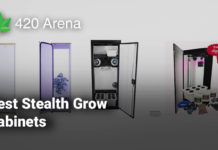





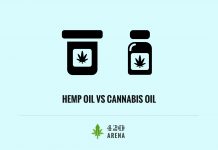



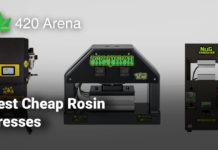
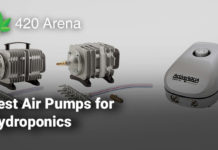

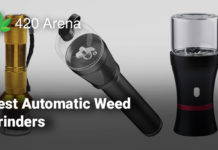
![How to Use Carbon Filters in Your Grow Room [7 Best Carbon Filters for Grow Rooms in 2021] How to Use Carbon Filters in Your Grow Room](https://420arena.com/wp-content/uploads/2020/12/How-to-Use-Carbon-Filters-in-Your-Grow-Room-218x150.jpg)





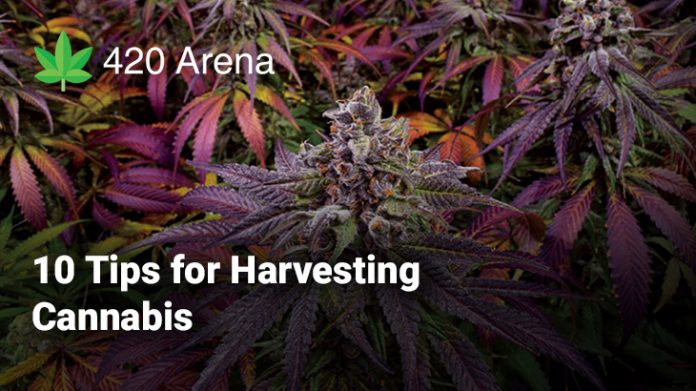

![How to Make a DIY Bubble Cloner [Complete Guide] How to Make a DIY Bubble Cloner](https://420arena.com/wp-content/uploads/2021/02/How-to-Make-a-DIY-Bubble-Cloner-218x150.jpg)





